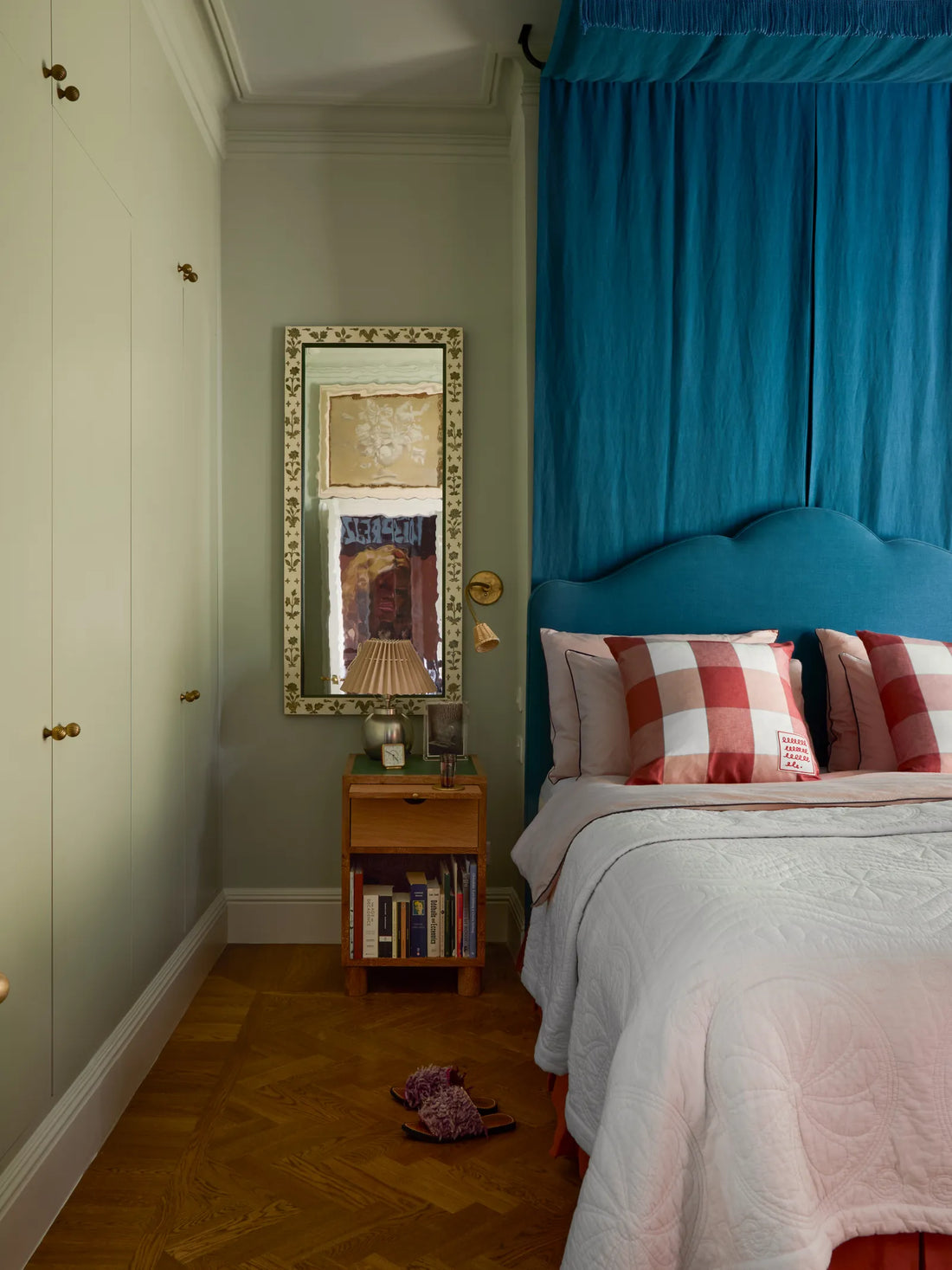
Breaking Beige: Why It’s Time to Loosen the Grip
If you’re a millennial, this might hit a little close to home.
We came of age in the heyday of Chip & Joanna shiplap chic. We were trained to "neutralize for resale," to fear bold paint like it could bite. We’ve been deeply conditioned to avoid "clutter" (also known as personality), and many of us still carry the trauma of when color meant “buy everything in turquoise.”
So the idea of reintroducing actual color, pattern, weirdness, and—dare I say—fun into a space? It feels risky. Like a design trust fall. But here’s the thing: design is supposed to evolve. Our homes should reflect who we are now, not who we were when "matte black fixtures" first broke the internet.
And yet... you can still spot the ones who haven’t let go. I’ve seen some recent reveals who clearly have talent—but the rooms feel… safe. Predictable. A little beige in more ways than one. They’re missing the mark not because they’re bad, but because they’re afraid to get it wrong. But you know what’s worse than getting it wrong? Getting it forgettable.
image credit: DeVOL
What’s Replacing the Neutrals?
Before you panic: no, we’re not replacing every warm white wall with neon checkerboard wallpaper (unless you want to—and in that case, I’m cheering you on).
This next wave of design isn’t just about being loud—it’s about being intentional. It’s about contrast, complexity, and character. Think:
Chocolate brown paired with saffron.
Soft greens with unexpected punches of cobalt.
Pattern-on-pattern layered like stories.
Texture that actually makes you want to touch things.
Rooms that say something—even if what they say is, “Yes, I absolutely bought that lamp at a flea market in Naples and built the whole room around it.”
The most compelling interiors right now aren’t playing it safe—they’re playing it personal.
image credit: Dean Hearne
Beige Isn’t Evil—But It’s Not a Personality
This isn’t about turning your back on neutrals forever. This is about asking why you’re still using them.
Are you choosing neutrals because you love them? Because they spark something in you? Or because you’re afraid your client—or your Instagram followers—won’t “get” that chartreuse ceramic cat you picked up last weekend?
Design has always had an emotional core. Neutrals used to say “peace,” “intentionality,” “quiet confidence.” But if your version of neutral now says “unbothered but also uninspired,” maybe it’s time to reframe.
You Don’t Have to Throw It All Out
I’m not telling you to rage-paint your entire home in mustard and magenta (unless, again, you want to). But I am saying: try something. Just one thing. A velvet stripe. A funky light fixture. A pattern that your 2012-self would have sworn off as “too much.”
Designers: if you're bored, your audience is, too.
Add something to surprise them—and yourself. The best rooms aren’t always perfect. But they should never be passive.
Final Thoughts: There’s Life Beyond Linen
Sad neutrals served their purpose. They were the weighted blanket of the design world—comforting, steady, unobtrusive. But we’ve outgrown them, just like we outgrew the fear of statement earrings or mixing metals.
So if you’re still holding on to the design equivalent of low-rise skinny jeans and subway tile… consider this your sign.
It’s not about chasing trends—it’s about staying awake. Boldness doesn’t mean bad taste. Sometimes it just means a home with a pulse.
And at the very least, your beige deserves a plus-one. Maybe a mossy green? Or rust? Or even a slightly unhinged wallpaper that makes your guests say, “Wait, what is that—and why do I love it?”
Exactly.
-Juliette




